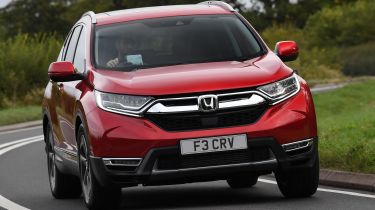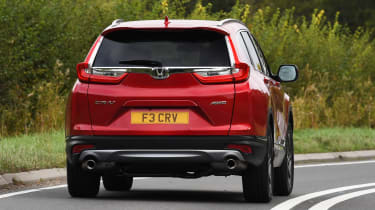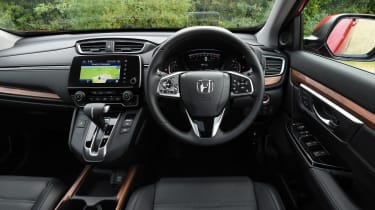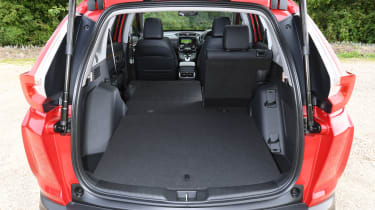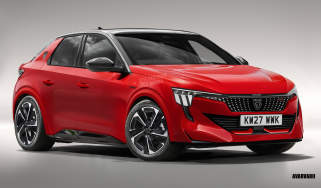New Honda CR-V 2018 review
The new fifth generation Honda CR-V has arrived in the UK, but what's it like from behind the wheel?

The new Honda CR-V doesn’t pretend to be anything it is not. Despite its push upmarket, it’s still a talented SUV, with loads of space and plenty of kit. It’s no sports car, but instead fits the bill as a composed and comfortable family car. Yet limited engine options and poor fuel economy let it down; we’d wait for the hybrid due early next year.
The Honda CR-V is still among the very best selling SUVs in America. And while its success in the UK isn’t quite as well documented, it remains a very popular model for the brand.
Now, though, Honda is taking the CR-V upmarket. The all-new version is not only posher, plusher and more expensive than before, it’s finally available with seven seats. But as top-spec models nudge almost £40,000, is a Land Rover Discovery Sport a better bet? We’ve got the latest CR-V on UK roads to find out.
Take a seat in the front and it’s immediately clear that Honda has spent a lot of time improving perceived quality. Our top-spec EX test car came with a beautifully flocked leather dashboard and super-smooth wooden inserts. Only the cheaper plastics on the glovebox and door bins escape the overarching premium feel.
Every version gets a part-digital instrument cluster, and all but the entry-level ‘S’ version use a seven-inch central touchscreen. It’s improved somewhat over the set-up found in the latest Civic – thanks in part to the inclusion of a rotary volume knob – but it’s still frustratingly complicated to operate at times.
More reviews
Car group tests
In-depth reviews
Long-term tests
Road tests
- Honda CR-V Advance Hybrid 2023 review
- Honda CR-V e:PHEV Advance 2023 review
- New Honda CR-V Hybrid 2019 review
Used car tests
Switching radio stations is a painful process, for example, and the dated Garmin sat-nav looks decidedly rudimentary next to the clear and concise mapping in a Volkswagen Tiguan. Luckily, Apple CarPlay and Android Auto (both now with Google Maps and Waze) are standard on SE cars and above.
Otherwise, the CR-V’s cabin is logically laid out and ergonomically friendly in its design. The large central armrest slides back and forth, and the climate controls are easy to operate. There’s loads of adjustment in the seat and steering wheel, though taller drivers may find they sit too high to clearly read the moveable heads-up display on EX models.
The rear bench is spacious, with enough room for adults to sit without complaint. There’s loads of head and knee room, and the nearly-flat floor means three can perch happily for longer periods. The two outer seats on our top-spec test car are heated, too.
While it’s true the new CR-V is available with seven seats, they’re only available on mid-spec SE and SR trims. As such, our car switched those extra chairs for a larger (561 litres vs 472 litres) boot and a spare wheel. That cargo area is a decent shape, with a low, wide opening and handy levers to lower the rear seats. Doing so reveals a completely flat 1,756-litre load bay.
On the road, the new Honda CR-V is a comfortable and refined place to spend time. There’s no avoiding the fact that this is a car that prioritises a soft ride over any kind of handling finesse – but it’s totally unpretentious in its approach. It rolls rather magnificently in the bends, yet eliminates all but the worst lumps and bumps around town, even on 19-inch wheels. It can bounce a little over larger undulations, so if you want a sportier SUV, a BMW X1 is a smarter choice.
As such, the CR-V is an excellent motorway cruiser. The lofty driving position gives a great view ahead and around, and there’s very little in the way of engine or wind noise. There is a bit of a rumble from the big wheels at speed, but it’s no deal breaker.
The engine is punchy enough, too. The downsized 1.5-litre turbo petrol unit is the only option at launch, though it will be joined by a hybrid next year. Our car’s optional (£2,000) CVT transmission is well matched to the car’s relaxed nature, but doesn’t like to be pushed. You can mimic the stepped ratios of a conventional automatic gearbox by using the steering wheel paddles, but in all honesty they’re best left well alone; gentle throttle inputs suit this car best.
But arguably the car’s biggest failing is fuel economy. With no stop-start system, our test car failed to return more than 32mpg over a mixed test route. With an official figure of less than 40mpg, it’s unlikely to improve drastically over time either. There’s a hybrid CR-V on the way, but for now, a comparable Skoda Kodiaq 1.4 TSI 4x4 DSG is cheaper to run.

